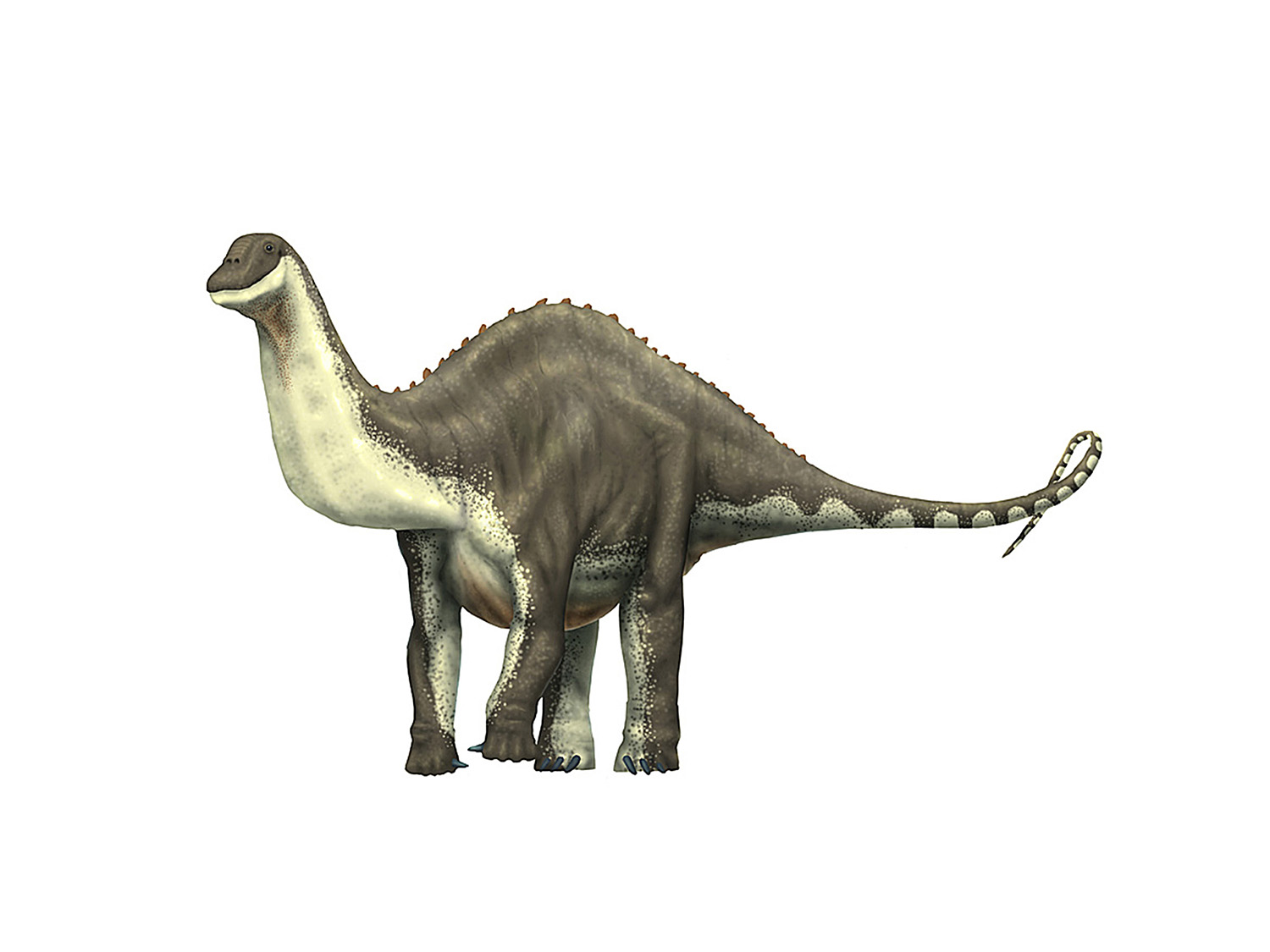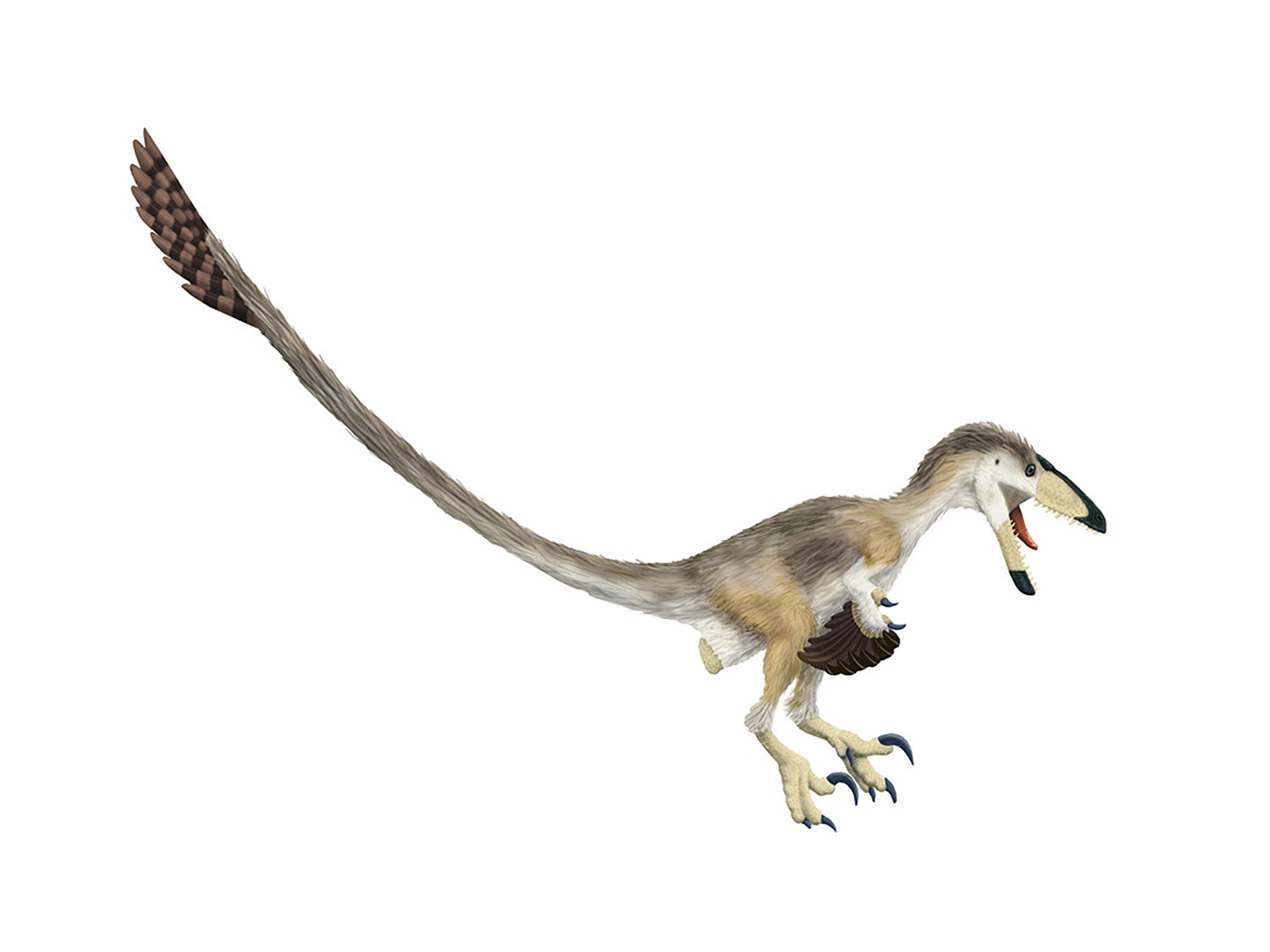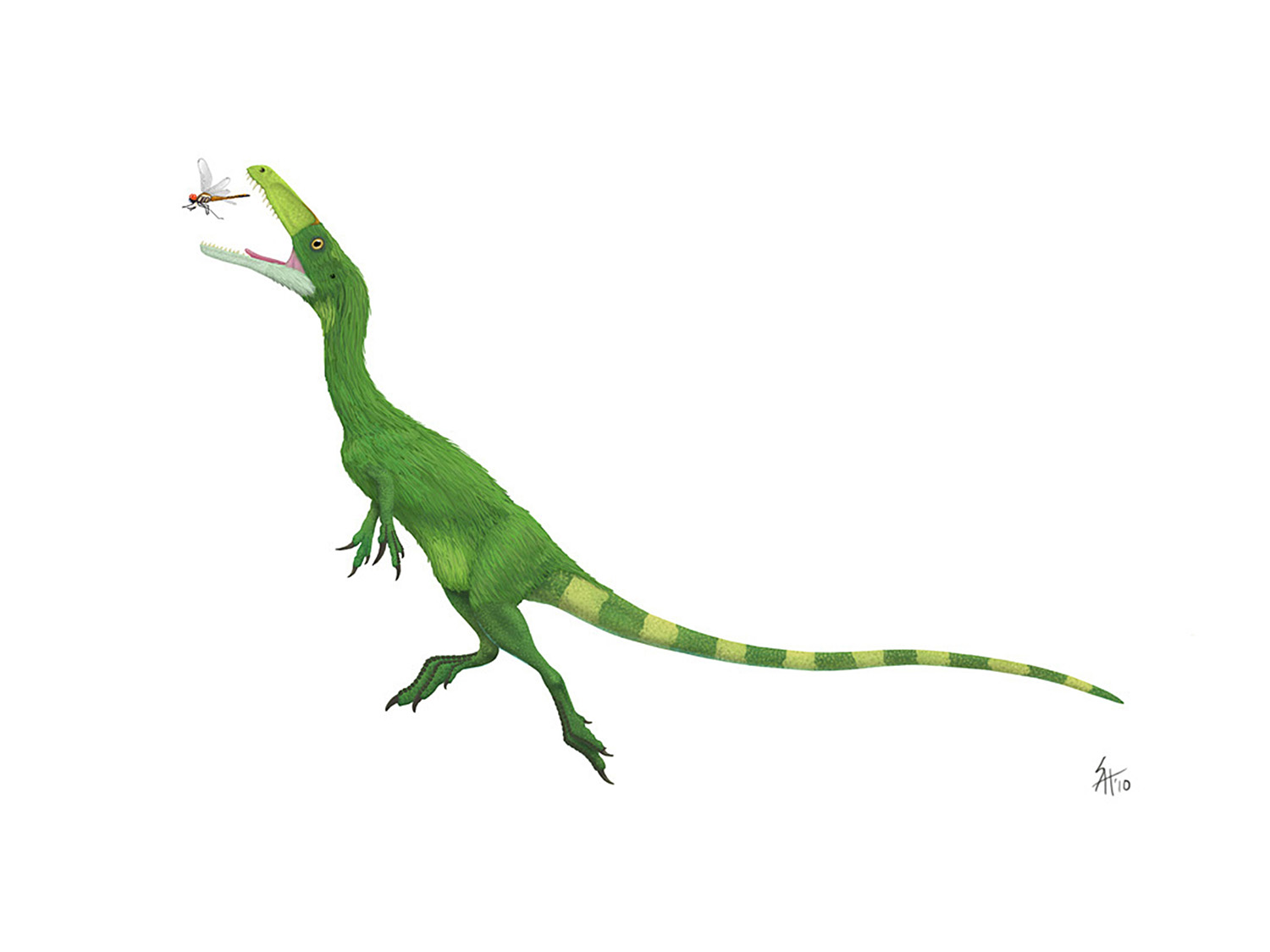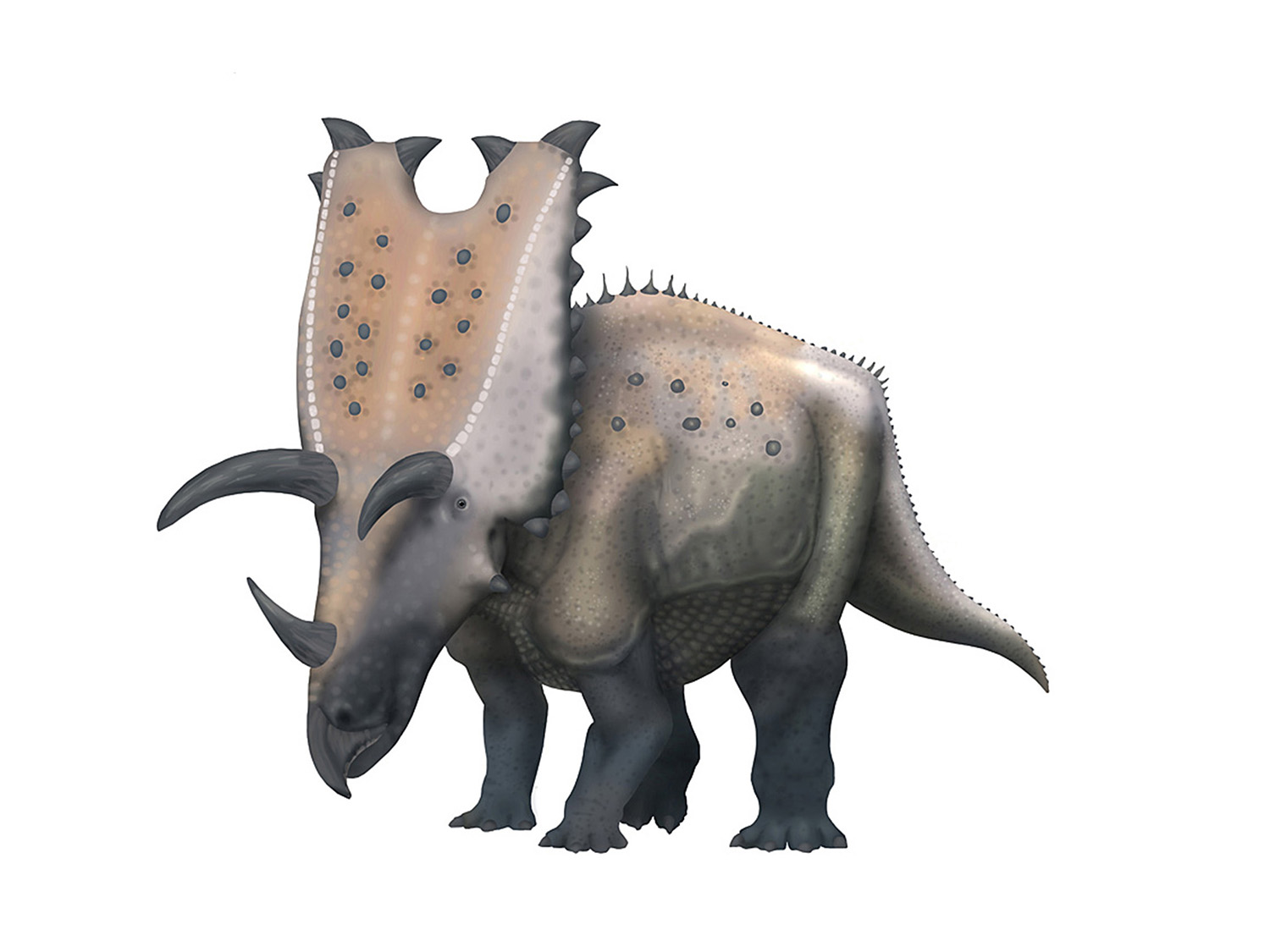Skeletal reconstructions: Schematic vs Realistic
/Above you see two skeletal reconstructions of the basal sauropodomorph Panphagia. The one on the bottom was published with the original description, while the one on top I just finished a couple days ago. What is worth noting is how extremely different they are.
Some of the differences can be chalked up to errors in scaling (compare the length of the tails). Other differences stem from the underlying anatomical assumptions, such as how rib cages articulate and the placement of the shoulder blade (definitely topics for future posts).
But if you look closely you'll see that the very shapes of the bones differ. And in every case where the known bones differ in shape it is the skeletal that was published in the original description that is inaccurate. This strikes me as odd, since the bones themselves were figured correctly in the same paper.*
At least that's odd if you assume that the skeletal reconstruction on the bottom is meant to be a literal representation of the bones, when in fact it appears to be a schematic skeletal diagram.
What, you may ask, is a schematic diagram? Here's the Wikipedia definition:
A schematic diagram represents the elements of a system using abstract, graphic symbols rather than realistic pictures. A schematic usually omits all details that are not relevant to the information the schematic is intended to convey, and may add unrealistic elements that aid comprehension.
The artists among you may have just suffered an involuntary shiver. And you should; as detailed in my three part series on the history of skeletal reconstructions, it has been the norm rather than the exception for peer-reviewed papers to publish schematic skeletal diagrams. That is, rather than attempt to represent the bones exactly as they were in life, the skeletal emphasizes key features of the anatomy (sometimes literally "emphasizing" them) while perhaps demonstrating other key information, such as which bones are preserved. This is actually a common practice across the sciences. Any of you remember reading about cell structures in your high school biology class? Those illustrations of cells are not intended to be realistic, they're meant to convey the salient information effectively to the reader so you can learn the parts.

Even within the very papers we eagerly search through to discover those skeletal drawings there's a universal type of schematic image: the stratigraphic column.
No one mistakes these for literal representations of the outcrop. No artist would think that they could translate this image into a lovely landscape illustration that would match what you would see if you traveled to the dig site. This sort of pictorial short-hand is both common and necessary in science.
As a scientist you want your diagrams to convey the important information, whether it's the placement of the specimen within its local stratigraphy, or the major anatomical characters and the completeness of a specimen. That data is generally seen as more vital to a description than whether the diagram is showing the information necessary for an artist to use.
That's not to say that paleontologists don't want their published skeletal diagrams to be realistic, it's just frequently not the top concern. But the way people view skeletal reconstructions has a profound impact on how we view dinosaurs.
Over the last two decades Greg Paul's skeletal reconstructions redefined our expectations of skeletal drawings, and the consistency with which he produced them has (in)famously refined and narrowed the range of depictions of dinosaurs, a fact that Greg Paul himself has recently lamented. As we enter a sort of Post Paulian Period, one of the lasting expectations of laymen, artists, and even many scientists is that skeletal reconstructions should by default be seen as realistic portrayals of extinct animals; a sort of virtual x-ray of extinct life forms.
And why not? Greg Paul may not want people to base their paleoart on his skeletals, but he's produced more skeletal reconstructions than anyone else, and he obviously intends his skeletals to be realistic depictions of extinct animals, right?
Right?!!!
To be frank, the answer is both yes and no. Any line illustration is necessarily somewhat schematic, since you are sacrificing details for the clarity of solid lines. Greg Paul himself documents some of the areas where his skeletals are more schematic than literal (interested readers are directed to pages 226-228 of Predatory Dinosaurs of the World). Among the shortcuts Greg takes are simplifying the gastralia basket (something I do as well) and rendering the limbs in side view as if they are in a perfect parasagittal plane, even though in life the elbows and knees would bow out.
Does that mean that paleo artists need to throw their arms up in the air and quit? Not at all. We may not be able to establish a black and white dichotomy between schematic and realistic skeletal drawings, but there are clear differences in practice. The short cuts Greg takes are intended to balance saving him time while having a minimal impact on how realistic the skeletal is overall.
As an example I offer up my experience when describing Supersaurus with my colleagues; not surprisingly I was working on a skeletal reconstruction of the critter as part of my contribution. As with all of my skeletal reconstructions, I wanted the supersaur skeletal to be an accurate and realistic representation of the animal, not a purely schematic one. Alas, Supersaurus is only known from two specimens, and both of them leave a lot to be desired in the category of completeness. This made the process a lot more difficult than it is when restoring an animal known from more complete remains. But all was not lost. We spent a lot of time evaluating which species were best suited to pattern missing parts after, and did lots (and lots) of cross-scaling; not just of individual bones, but also in proportional relationships. That is to say I was able to constrain the unknown portions of the animal from comparative and phylogenetic data. The upshot? Have a look at this:
What is particularly noteworthy is that the two distal vertebrae were not known when I first made this diagram. We only had ~10% of the tail, but with careful scaling and proper selection of taxa to model the bones on, I didn't have to make any changes to the skeletal after the additional bones were excavated and prepared.
Obviously things don't always work out this well - sometimes it's less clear which taxa should be used to constrain missing elements, or an animal might have truly novel proportions. But missing data and margins of error are simply a fact of life in paleontology. What I hope is clear is that regardless of the possibility for error, this skeletal is intended to be a realistic portrayal of the animal, not a purely schematic one.
While the degree to which a skeletal drawing is schematic or realistic isn't always black and white, the impact they have on paleo art is. When an artist bases a life reconstruction on a skeletal they need to have the real proportions and shape of the animal, which are just not available in schematic skeletal diagrams. And it's not just art - for better or worse researchers sometimes cull data such as relative limb proportions from published skeletal drawings. If, for example, a researcher was interested in comparing relative tail lengths in basal dinosaurs, it would matter very much which skeletal of Panphagia was evaluated.
For some dinosaurs only a single skeletal reconstruction exists. Sometimes when when there are two or more they are quite different. So how is one to know which (if any) of the skeletals are meant to be more literal, and which are schematic? This brings me to the main issue of the day:
We need more transparency in skeletal drawing labels!
The two drawings of Panphagia at the beginning of this post are quite different (especially if you are trying to draw the beast), yet they both convey accurate and useful information. They just aren't intended to convey the same types of information (although there is overlap). When writing a professional paper, which one of these styles is "better" depends on the needs of the authors, the time, ability, and access to the data that the illustrator has, and a host of other practical concerns. Far be it from any of us to dictate that one type of skeletal diagram is suitable in all cases.
What is needed is for authors (and their scientific illustrators) to label their skeletal diagrams more precisely. Skeletal drawings are not like the schematic diagrams of stratigraphic columns, as there are large bodies of published skeletal diagrams that are intended to be realistic portrayals. Because there are multiple visually similar types of skeletal diagrams, we need proper labeling so that the viewer's expectations match the authors' intent.
Proper labeling is a basic part of science; papers are rightly rejected for not documenting the confidence interval in a study, or for failing to be precise in the use of significant figures. In fact most of these practices become second nature long before getting a graduate degree. So why not with skeletal drawings?
There actually are a few stumbling blocks. For one, there aren't any published guidelines to differentiate between the two. Another problem is that not all authors are actually aware of the difference - I know of cases where the artist has been largely left to produce a skeletal on his or her own with little instruction ("it's like taxon A but with a bigger nose and longer tail"). Yet other researchers simply don't think any extinct animal can be reconstructed with this degree of accuracy ("too many assumptions") so they feel all skeletal reconstructions are schematic. This last view may not be correct, but many of the techniques that render it incorrect are not published in a peer-reviewed journal.
But that doesn't mean we can't start to work to make it better. To facilitate this (or at least a healthy discussion) I will make the following suggestions for researchers and illustrators:
For researchers:
1) No matter how talented an illustrator, people cannot consistently render accurate proportions without measurements. If measurements are not available (or not made available) the diagram must be assumed to be schematic.
2) People can (obviously) not draw accurate bone profiles if they have never seen the bones in question. Ideally an illustrator would see the original material, but if this isn't practical be sure to get photos, the more the merrier. If this is also not practical, label the skeletal diagram as schematic.
3) Sometimes there just are not enough bones to justify a new skeletal reconstruction, so skeletals of related animals are modified just enough to show of the new bone (or bones). Please label them "Schematic skeletal of Taxon A, modified after Smith (2010)".
4) Remember there is no more shame in using a schematic skeletal diagram then there is in using a strat column. But please label the convention you are using!
5) If a skeletal is intended to be a realistic reconstruction of the animal, then it should also be treated as a form of data that needs updating. If new finds or a more complete description uncovers some inaccuracy, update/amend the image it in a future publication, as you would with a description or phylogenetic analysis.
For Illustrators:
1) Ask up front what sort of skeletal drawing is being asked of you. You should also know what you need in order to produce the requested image - if you don't have enough information to produce the type of drawing that is desired, ask for it.
2) Illustrations are often used outside of professional papers - in books, museum displays, on this fancy world wide web thingy. Maintain proper labeling wherever possible (I realize that illustrators may have little control over some projects, but maintain best practices whenever possible - this will also encourage book editors and museum directors to adopt more explicit labels).
3) If you are producing a realistic skeletal reconstruction, take responsibility for updating it as necessary. If there isn't time to make changes, put that in the label (e.g. "Executed before additional information about the elongated neural spines was available.")
4) There's no shame in making a schematic diagram. It's a useful contribution to science, so don't feel like you're producing a "second class citizen" of the illustration word and decide to not label it precisely.
5) Finally, if you are trying to do a life reconstruction of a dinosaur, be sure to find out if the skeletal drawing available to you is schematic or not. If it is, you may need to do more work before illustrating it. That is, unfortunately, the nature of our work.
Conclusions?
I feel like this issue has been a "dirty little secret" in both scientific and paleo art circles. Hopefully this provides some food for thought. A lot of work needs to be done if we're going to continue to move the "science" in scientific illustration forward, but more accurate labeling of images should be something that can be universally embraced, and something we should all be aware of.
* I want to be very clear that I'm not criticizing the illustrator of the original Panphagia skeletal reconstruction (there isn't specific credit given in the Martinez & Alcober paper, so I presume it was done by one of the authors). It's a perfectly good schematic, and demonstrates the key features of Panphagia as well as which bones are preserved. This also in no way should cast aspersions on the paper itself, which is an excellent example of the value of publishing longer format descriptions in journals like PloS ONE, rather than the glorified abstracts required by certain high impact journals.
I chose this example because it was recent enough and high profile enough to make an excellent jumping off point for the larger discussion of schematic skeletals, not because there is anything wrong or unusual about it.





















